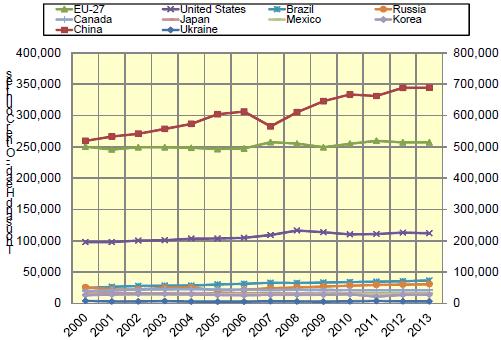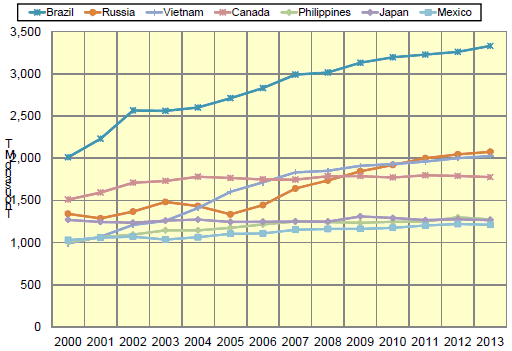



CME: EU-27 Hog, Pork Numbers Cause Major Concern
US - A topic of some discussion within the pork industry is the expected level of slaughter and output for various players on the world stage in the coming year, write Steve Meyer and Len Steiner.Of particular concern is the status of EU-27 hog and pork numbers given the 1 January deadline for eliminating sow gestation stalls. The EU ban applies to the period from 4 weeks post breeding to 1 week pre-farrowing. It seems that no one has a very good idea of just how this major change in allowable production technology is going to play out.
First, there is the question of just how widespread compliance
will be on 1 January. We have seen reports that some countries
will be 100 per cent compliant while others may have no more than 40
per cent of their production in compliance. Regardless of the numbers,
it is clear that not nearly all of the hog farms in the EU will have sows
in some sort of group housing by 1 January.
This begs the second question: What happens to the pigs
from farms that are not compliant? Our search turned up nothing
about how the ban will be implemented. What happens to the pigs on
farms that have not changed? We presume they will still be processed
but for how long will that be allowed? Switching a pork production
system is much more complex than switching an egg system
where simply removing the hens stops the flow of production. Roughly
6 months worth of pigs from stalled sows would be on a farrow-tofinish
farm at the time the sows are removed from stalled barns. What
about those pigs?
Finally, how many EU pig farms will simply shut down instead
of complying with the new regulations? We are confident that some
percentage of farms will fall in this category just as some percentage
of French laying operations did last year. Recall that those closures
caused significant shortages of eggs and explosive prices. The time
lags discussed above mean that the closures will not have an immediate
impact on hog slaughter or production but the declines will still be
seen during 2013.
Which brings us to expectations of world supply. Data
from USDA’s Foreign Agricultural Service appear in the charts below. The ones at right show FAS’s forecasts for slaughter
and production for the top 10 countries for each measure with China
on the right-hand axis and all other countries on the left-hand axis.
Note that Vietnam and Philippines are not included in the slaughter
chart because FAS has no slaughter data for those two countries.
The charts on page two show all countries except China, the EU-27
and United States.
Annual Hog Slaughter

Annual Pork Production

Ann. Hog Slaughter - Selected

Ann. Pork Production - Selected

The curious numbers, though, are for the EU where FAS
believes slaughter will be equal to this year’s 257 million head and
production will be only 0.5 per cent lower at 22.625 MMT. Those figures are curious because they do not fit with other forecasts or the anecdotal
reports we are hearing out of Europe. Some of those have EU-27
slaughter down as much as 5 per cent next year. Whole Hog Brief, a UKbased
global pig industry newsletter, cites EU Commission numbers
that forecast a 2 per cent reduction in “pig production“ next year. We’re not
sure if that is a reduction in pig numbers or meat production but the
number is definitely negative. The same issue includes a forecast of
15 per cent LOWER EU pork exports in 2013. FAS has EU-27 exports 4 per cent
HIGHER in 2013.
Logic tells us that higher costs and more stringent regs will
lead to lower EU output and exports in the coming year. The US
industry has historically filled such voids. Can it do so in 2013 given
growing Brazilian output and the weak real?






